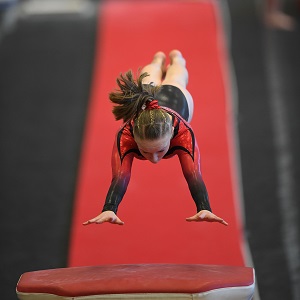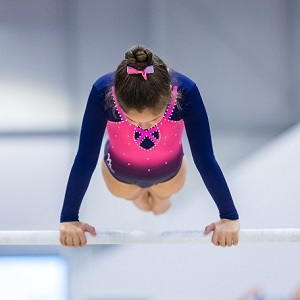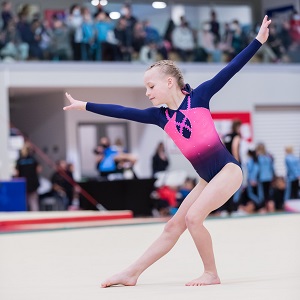WOMEN'S ARTISTIC GYMNASTICS (WAG)
STEP PROGRAMME
The STEP programme is the National competitive programme for women's gymnastics. STEP stands for Striving Towards Excellence in Performance.
Appartus
- Gymnasts compete on four apparatus: Vault (VT), Uneven Bars (UB), Balance Beam (BB), Floor Exercise (FX).
STEP
- 1-4: Elementary. Compete compulsory routines and exercises.
- 5-6: Junior. Compete compulsory skills with optional routines. There is some flexibility at these levels to compete different variations of skills.
- 7-10: Senior. Compete optional routines and skills. The gymnasts compete routines based on the routine requirements and bonus skills.
Canterbury / Nationals Representation
- STEP 5+ gymnasts are eligible to represent Canterbury at the National Gymnastics Championships and must achieve set criteria to be selected for this.
Competitions
- Visit our Gymnastics Competition Schedule, Timetables & Results page for competitions that our gymnasts will be attending this year.

VAULT (VT)
To perform a vault, the gymnast runs down a 1 metre wide x 25 metre long carpet runway.
During the 25m approach to the vault the gymnast must develop the neccsary power to complete all their aerial skills before landing.
Upon take off from the springboard the gymnast explosively propels herself upwards, dynamically pushing off the vault to generate greater height and distance in the second phase of flight.
Judges watch for proper body alignment, form, quick repulsion, the height and distance travelled. Generally, the more saltos and twists, the higher the difficulty value of the vault. The best vaults are explosive off the springboard and when pushing off the vault table.
In addition, gymnasts should "stick" the final stage of the vault performance by taking no extra steps when landing.

UNEVEN BARS (UB)
The bars are parallel to each other and can be adjusted and set at different heights, with the low bar ranging between 1.4 and 1.8 metres, and the high bar ranging from 2.1 to 2.5 metres, however at senior competitive standard the dimensions are fixed.
The most recognizable skills on uneven bars are release moves, pirouettes, and circles such as giants and free hip circles.
The entire routine should flow from one movement to the next without pauses, extra swings or additional supports. The most daring parts of the routine are often in the high-flying release moves and dismounts. Exact handstand positions are expected with large deductions for even minor deviations.
Good form is important throughout the bar routine and judges will be looking for straight legs, pointed toes and an extended body in handstand positions.
A controlled and often spectacular dismount ends the routine. Both height and distance from the bar are judged. The goal of every gymnast is to stick the landing.

BALANCE BEAM (BB)
Gymnasts perform on an apparatus that is 10cm wide, measures 5 metres along its length and stands at approximately 1.25 metres in height.
Although the beam appears to be hard, modern beams are slightly sprung and covered in leather or suede material.
Gymnasts perform many types of skills on the balance beam, including leaps, jumps, turns, holds and acrobatic moves in a spectacular series of combinations that demonstrate elegance, flexibility, balance, and self-control.
The routine builds up to a dismount high point, often preceded by a dramatic acrobatic tumbling combination.
This is a high risk apparatus; it takes great deal of courage and concentration to perform difficult tumbling and dance skills on beam.

FLOOR EXERCISE (FX)
The performance area is 12x12 metres with a 1 metre run off perimeter making the overall dimensions 14x14 metres.
The floor provides the gymnast an opportunity to express their personality through the choice of music (at senior levels) and choreography. Throughout the routine, the gymnast must harmoniously blend dance elements with powerful acrobatic tumbling.
The floor routine is choreographed to music, lasting no more than 90 seconds, and must cover the entire floor area. There are predetermined skill requirements which vary by the level of gymnast, such as leaps and turns, and tumbling passes. The routine should be varied in mood, tempo, direction and include forward and backward elements.
The gymnast must maintain energy and excellence throughout the entire routine which can be challenging because of the demanding content in the exercise.
Individuality, originality, mastery and artistry of presentation are key ingredients for a high score.

